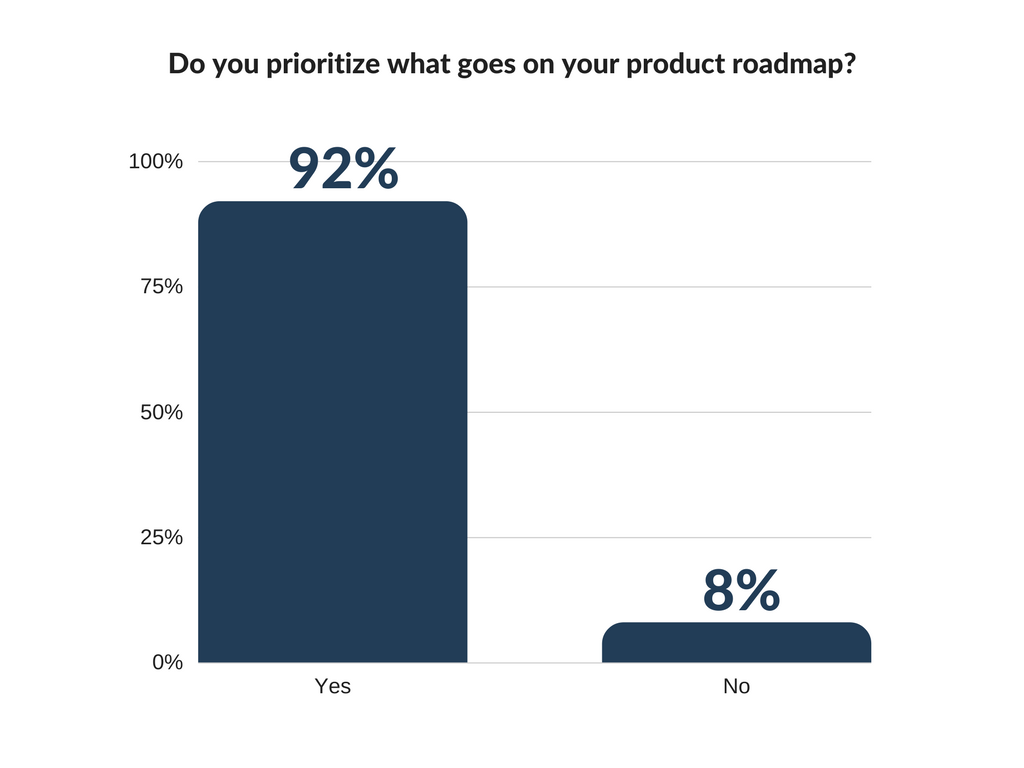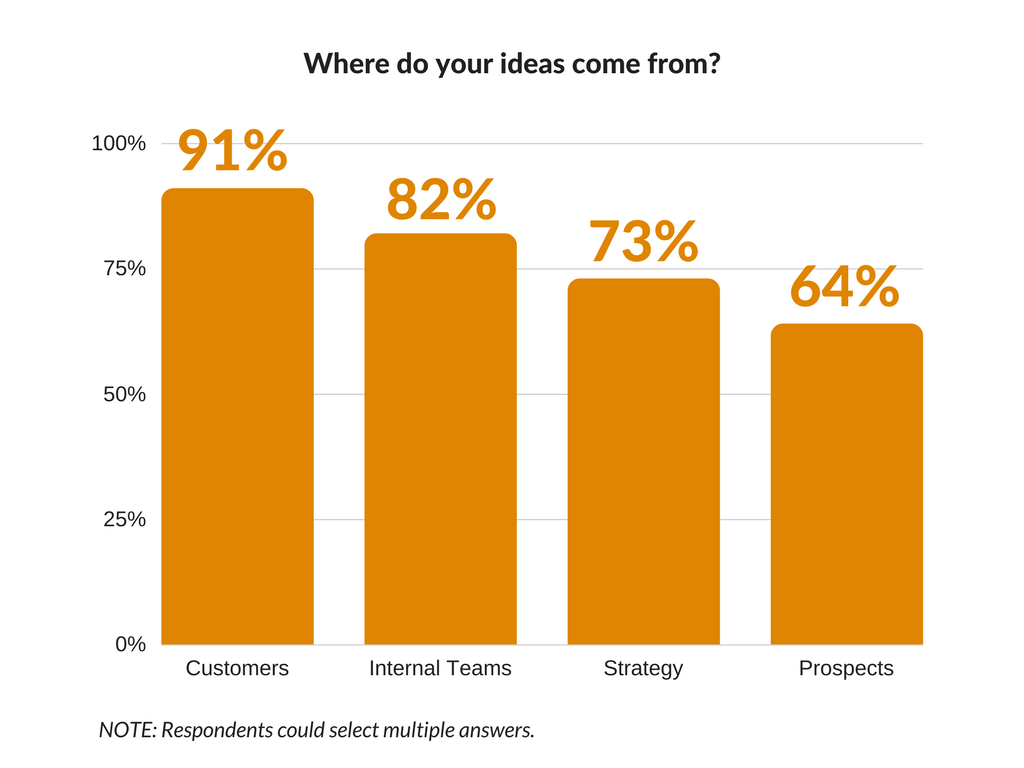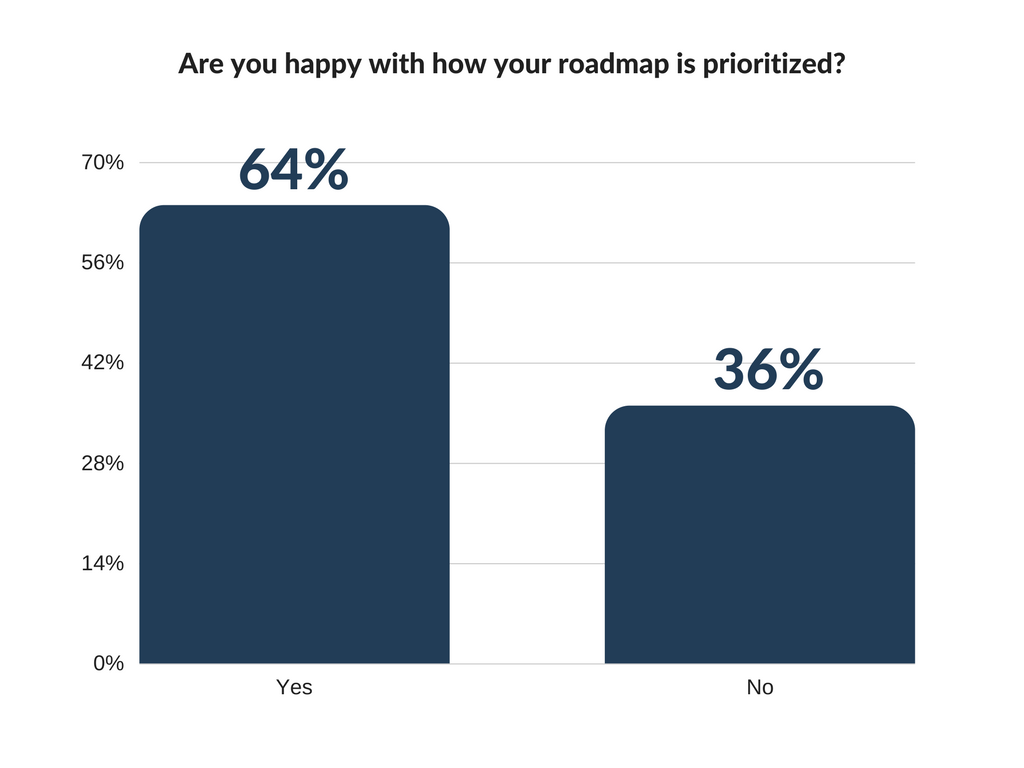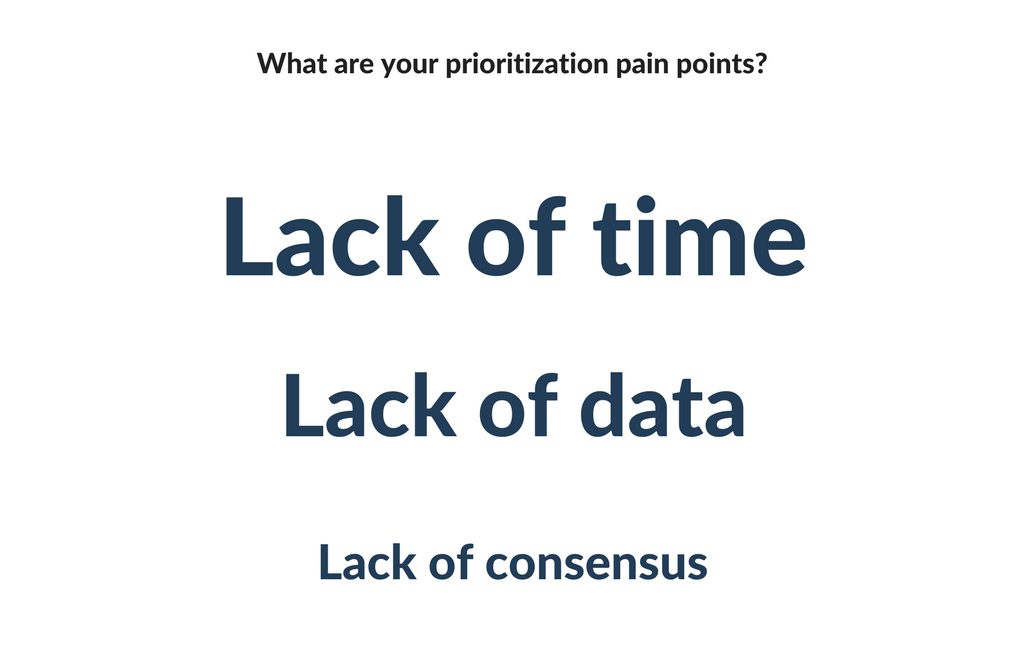We recently conducted a survey which aimed to shed some light on how SaaS companies are currently prioritizing their feedback so we can identify the current and future trends.
The answers were extremely interesting and we have learned a lot from the data we’ve gathered. We’d like to thank everyone who responded to the survey and took the time to answer our questions.
So, without further ado, here is what we found…
How many SaaS companies prioritize?
We started with a simple Yes/No question: “Do you prioritize what goes on your product roadmap?”

It turns out the overwhelming majority of those surveyed do, in fact, prioritize. 92% said they did, while 8% of SaaS companies said they did not.
This is hardly a surprise and is in line with our initial estimates. It suggests that the majority of SaaS companies are aware of how important prioritization is when it comes to managing feedback.
Who prioritizes feature requests?
We wanted to to know which individuals were tasked with settling on the priorities, whether it was Leadership, or the Product Team, or even the whole organization. Note that respondents could select multiple answers.
The results for this question were a little more varied. Leadership came out on top, with 73% of SaaS companies delegating prioritization to the Leadership team. Close behind in second were the Product Teams with 64%. 18% of SaaS companies have the whole organization taking part in prioritization, while other teams such as Sales or Support came in last with only 9%.
This tells us that there is scope for companies to improve in terms of who is able to prioritize. Enabling people from all around your organization to prioritize means you get a wide range of perspectives and viewpoints, and stronger data with which to make your decisions.
Where do ideas come from?
You can’t prioritize without ideas and so we were curious to find out where exactly those ideas come from. Again, respondents were able to select multiple answers.

A large number of SaaS companies, 91% in fact, told us that they receive ideas from their customers. 82% receive ideas from their internal teams, 73% use their organization’s strategy to create ideas, and 64% actively receive ideas from prospects.
This shows that the vast majority of SaaS companies are open to receiving ideas from as many sources as they can. While this might sound like a recipe for disaster, we believe this is far and away the best approach as you will receive different viewpoints and those different groups will want different things. The more data you have, the better your decision making.
How often do companies prioritize?
Priorities often change over time. It’s important that these changes are tracked so that you’re left with the most current data. We wanted to see how often companies felt they needed to prioritize their ideas.
The results were close, with 30% prioritizing on a monthly basis, and another 30% prioritizing every quarter. 20% did so daily, and the final 20% once a week.
This demonstrates the importance of ensuring your priorities are up-to-date with your organization’s current goals. The alternative to routinely setting priorities yourself is to let your customers and team members do it by themselves, whenever they feel like it. This saves you a lot of time and effort and it means that your data is as current as it can be.
How long does it take to prioritize?
We wanted to know how much time it took for people to prioritize their feedback. As we mentioned in the previous section, you can save a lot of time by opening up priorities to your users.

36% of SaaS companies told us they spend 2 to 4 hours each time they prioritize. This was closely followed by 27% who take 1 to 2 hours. Another 27% specified “Other”, and finally 9% said it takes them 4-8 hours. The companies who answered with “Other” fell either side of the other answers, with some companies even taking weeks to prioritize.
From this, we can plainly say that a lot of companies are spending large amounts of time prioritizing their feedback. The solution to this, as we’ve already stated, is to open the prioritization process out to users, with a tool purpose-built for that task.
How do companies decide what to build?
We asked the respondents about the factors they use to make product decisions. We gave them three options to choose from, and they could select multiple answers if relevant.
82% of SaaS companies said they look at their strategy and choose the best fit items. 64% said they build what their customers want. Finally, 45% build what prospects or the market are demanding.
It seems that the majority of SaaS companies are open to using various avenues of demand when it comes to deciding what to build next. This is in line with our own thoughts on prioritization - taking the priorities from customers, internal teams, and prospects, and then combining those with your strategy to make your product decisions.
What is your prioritization technique?
We were also interested in exactly how SaaS companies go about prioritizing their feedback and the methods they use.
The methods ranged from tools such as Receptive or Productboard, to custom solutions, product strategy, and the RICE methodology.
This shows that there are a wide range of methods out there to choose from.
Here are some methods that you should veer away from.
When it comes to scaling, we always say that you need to find a product that is designed to help you prioritize, otherwise you end up spending a lot of time and effort if you want to do it properly.
Are you happy with prioritization?
In order to get an idea of how well prioritization is working for the respondents, we asked if they were happy with how items on their roadmaps had been prioritized.

64% told us they were happy, while 36% were not. This shows a massive room for improvement in the companies that are not happy with how they currently prioritize, perhaps by adopting a new method or changing the frequency of prioritization.
As an addendum to this question, we asked them to explain their answer. Those who were happy with their process reported that they felt a good balance between strategy and customer feedback, and that strategy meant everyone was on the same page. Those who were unhappy felt that their decisions were not always driven by data, and that the ideas on the roadmap often came from themselves rather than through feedback collection.
What are the prioritization pain points?
Our final question centered on the pain points that SaaS companies felt when it came to prioritizing.

Perhaps the biggest pain point that was submitted was simply a lack of time, either to prioritize sufficiently, or to process all of the feedback in the first place. This could be overcome with the use of a prioritization tool or by tweaking the current methodology you employ.
Another common issue was a lack of evidence to confirm that the priorities were the correct ones, rather than relying on gut decisions to select the features that would be built. This usually stems from a lack of data in the first place. Improving how you collect and manage feedback would help to solve this pain point.
A final problem that often came up was a lack of consensus on what the organization’s aims should be, with stakeholders, leadership, and the rest of the company not aligned. This can make it hard to decide which direction to take the product in. To ensure everyone is aligned, your organization should create a product strategy and make sure everyone agrees. That will simplify the prioritization process.
Find out how to create the ultimate product strategy.
Conclusions
So, to summarize…
The majority of SaaS companies are aware of the importance of prioritizing requests and ideas that come in. It’s crucial if you want to build a better product and scale up your organization.
Generally the responsibility of prioritizing falls upon the Leadership or Product teams, but sometimes the whole company is allowed to have a say. While we agree that the whole company should prioritize, it’s also important to note that letting your customers prioritize opens up a whole new data set for you to work with.
SaaS companies tend to spend 2-4 hours prioritizing. Some do this as often as daily, some as infrequently as quarterly. Depending on how many requests you receive, we advise meeting either weekly or monthly to discuss priorities.
A lot of different methods are used, RICE to custom-built solutions. We recommend using a product designed to help you prioritize as soon as you are able, as this will help you to scale in future, and will save you a wealth of time and effort.
While the majority of companies are happy with how they prioritize, there are a number of pain points that they share. The most common of these is the lack of time. This can be solved by adopting an efficient methodology, allowing your customers to prioritize themselves, and by using a product dedicated to managing feedback.
If you want to learn more about how to prioritize, then you’re in luck! Check out our other resources on the topic.




